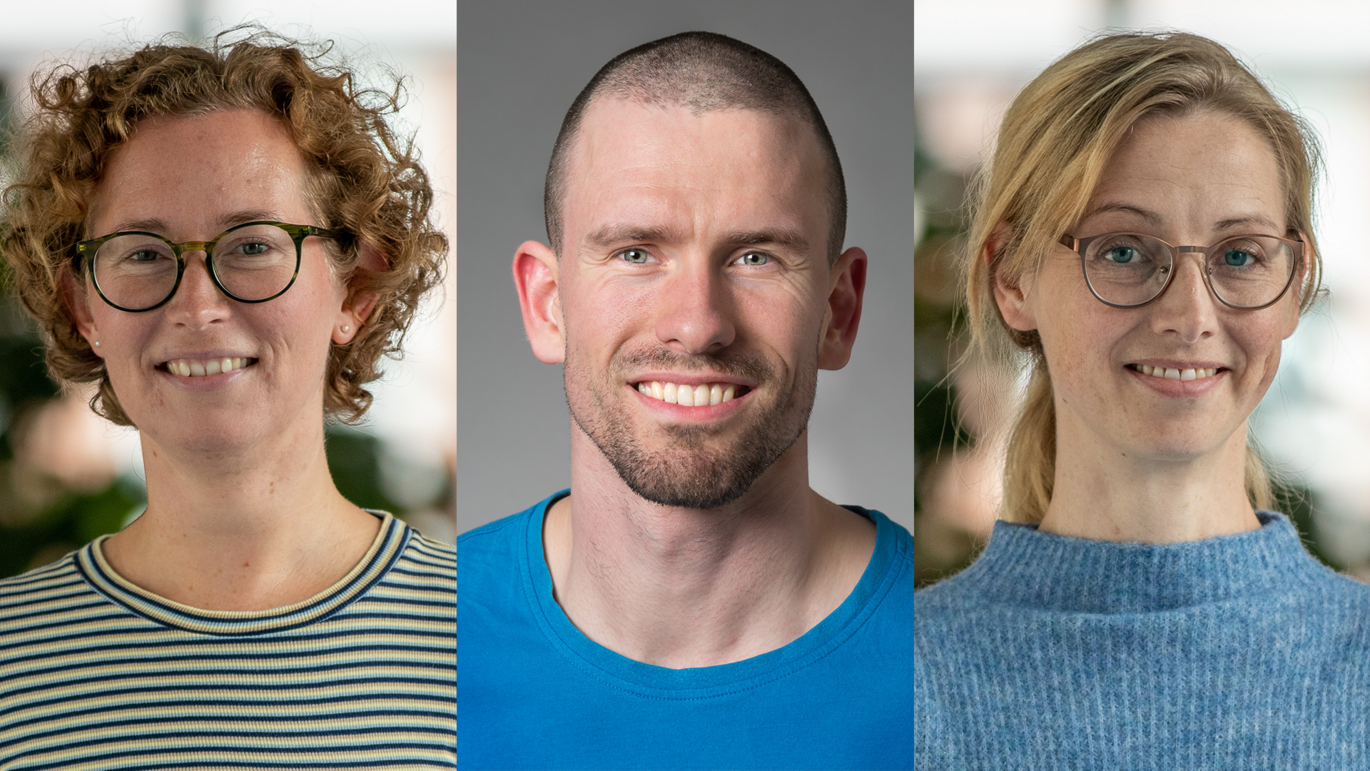Three researchers from Health receive grants from the Danish Victims Fund.
Kirstine Lykke Nielsen, Troels Græsholt-Knudsen and Charlotte Uggerhøj Andersen have recently received grants from the Danish Victims Fund for their research into crime detection.

Three researchers from Aarhus University have received funding for research projects aimed at generating more knowledge about child abuse, dating blood traces, and how to detect nitrous oxide use in road users. The grant giver is the Danish Victims Fund, which works towards strengthening knowledge and efforts in support of victims of crimes and traffic accidents.
Kirstine Lykke Nielsen is an assistant professor at the Department of Forensic Medicine, where she researches metabolomics, which can be used to examine changes in blood traces and fingerprints over time. She has received DKK 1 million for a project to predict the age of blood traces, which will help police more reliably link a perpetrator, an item or weapon to the time of a crime or victim.
"At the moment, the police have no way of determining how old blood is, i.e. how long the blood has been in atmospheric air outside the body. We’ve been successful at developing methods to date blood traces under the well-defined conditions of a laboratory. However, a lot of uncontrolled conditions need to be investigated before these methods can be applied in the field. The aim of this project is to implement age determination of blood traces in forensic chemistry and forensic practices so the police can use this knowledge in their investigations," says Kirstine Lykke Nielsen.
The project is being carried out in collaboration with the Bioinformatics Research Centre (BiRC) at Aarhus University.
Troels Græsholt-Knudsen is a postdoc at the Department of Forensic Medicine, where he researches child abuse prevention. He has received DKK 2 million for a project aimed at identifying undetected victims of physical and sexual abuse. The project will compare data from questionnaire surveys with registry data, and aims to improve early detection of families at high risk of child abuse by better equipping frontline staff to spot signs of abuse.
“Far from every case of a child being abused at home is detected and registered by the public sector authorities. And yet very little is known about why some cases of abuse go unreported. The aim of the project is therefore to map the differences between children whose abuse is detected and whose abuse is not detected. Our thesis is that there are background differences between the children who are registered and the children who are overlooked," says Troels Græsholt-Knudsen.
The project is being carried out in collaboration with Ole Ingemann-Hansen from the Department of Forensic Medicine and Bodil Hammer from the Department of Public Health.
Charlotte Uggerhøj Andersen is a clinical associate professor at the Department of Forensic Medicine and researches the side effects and toxicity of medicinal products and intoxicants. She has received DKK 1.5 million for a project that will investigate the best ways of detecting nitrous oxide in blood samples and exhaled air. Nitrous oxide is widely used as an intoxicant and can affect a person’s driving ability. The project will therefore be important for victims of road accidents caused by road users under the influence of nitrous oxide.
"We still don’t know exactly how long nitrous oxide can be detected in road users after ingestion, or how to detect it. We know that it can be measured in blood, saliva and exhaled air for less than an hour after ingestion. However, we hypothesise that certain changes in the body's metabolite patterns also occur, and these changes can extend the detection time of nitrous oxide. We will test the hypothesis in a clinical trial with 30 test subjects who will inhale a specific dose of nitrous oxide or placebo. We will also look for biomarkers that can track nitrous oxide ingestion after the nitrous oxide itself has disappeared from the body," says Charlotte Uggerhøj Andersen.
The project is a collaboration between the Department of Forensic Medicine and the Department of Dentistry and Oral Health.